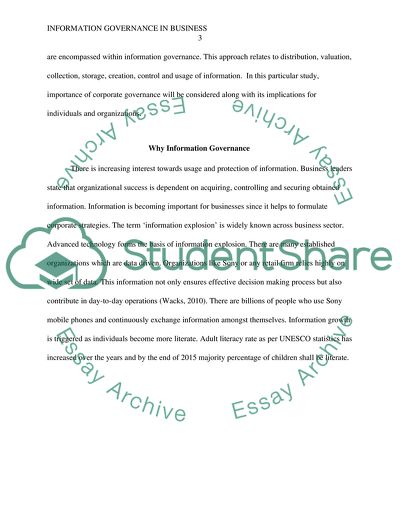Cite this document
(Information Governance in Business Coursework Example | Topics and Well Written Essays - 3000 words, n.d.)
Information Governance in Business Coursework Example | Topics and Well Written Essays - 3000 words. https://studentshare.org/information-technology/1879399-information-governance-in-business-a-briefing-paper
Information Governance in Business Coursework Example | Topics and Well Written Essays - 3000 words. https://studentshare.org/information-technology/1879399-information-governance-in-business-a-briefing-paper
(Information Governance in Business Coursework Example | Topics and Well Written Essays - 3000 Words)
Information Governance in Business Coursework Example | Topics and Well Written Essays - 3000 Words. https://studentshare.org/information-technology/1879399-information-governance-in-business-a-briefing-paper.
Information Governance in Business Coursework Example | Topics and Well Written Essays - 3000 Words. https://studentshare.org/information-technology/1879399-information-governance-in-business-a-briefing-paper.
“Information Governance in Business Coursework Example | Topics and Well Written Essays - 3000 Words”. https://studentshare.org/information-technology/1879399-information-governance-in-business-a-briefing-paper.


